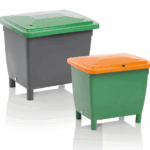The Treatment For Regulated Medical Waste by Riverside County Medical Waste Disposal
The medical wastes that are regulated are cleaned or decontaminated to lower the amount of microbial burden in the waste as well as to make the by-products safe for disposal and handling. In microbiology, the waste is not transformed into “sterile” because the treated waste is not deposited in a clean site. Furthermore, waste must not have to be served with identical reprocessing requirements similar to surgical instruments.
Riverside County Medical Waste Disposal
The traditional treatment techniques by Riverside County Medical Waste Disposal involved steam sterilization (i.e., autoclaving), incineration, or interment (for the waste of anatomy). Alternative treatment methods developed in recent years include chemical disinfection, grinding/shredding/disinfection methods, energy-based technologies (e.g., microwave or radio wave treatments), and disinfection/encapsulation methods. State medical waste regulations specify appropriate treatment methods for each category of regulated medical waste.
Types of Medical waste:
Of all the types that comprise the regulated medical wastes, microbiological wastes, e.g., untreated culture stock and amplified Microbial populations. These are the most likely for the transmission of infectious disease, and sharps carry the most significant risk of injury. Cultures and stocks that are not treated microorganisms are a subset of the microbiologic or clinical laboratory waste stream if the microorganism has to be grown and amplified, the laboratory to a high concentration to allow work on the specimen.
The item must be considered a possibility of decontamination on-site, but at least within the laboratory. In the past, this was done successfully using either autoclaving (steam sterilization) or incineration. If steam sterilization is used in the health facility is employed for the treatment of waste. Riverside County Medical Waste Disposal exposes the waste for up to 90 minutes in autoclave temperatures of 250degF (121degC). It depends on the weight of the load and the type of container that could be required for an excellent decontamination process.
Safe Handling And Removal:
After steam sterilization, the resulting residue can be safely handled and removed along with the rest of the non-hazardous solid wastes in line with the state’s regulations for solid waste disposal. Incineration on site is an alternative treatment option for microbiological or pathological wastes, provided that the incinerator has been designed to burn the wastes and remain within EPA emission standards.
Improper burning of wastes with large amounts of moisture and low energy levels (e.g., pathology waste) can cause emissions problems. State-wide medical waste regulatory programs of Riverside County Medical Waste Disposal define acceptable ways to activate amplified stock and cultures of microorganisms, a few of which use technologies rather than steam sterilization and incineration.
Modern Health Facilities To Deactivate Microbiological Waste:
There have been concerns concerning the capacity of modern health facilities to deactivate microbiological waste on-site. As a result of the fact that a large number of these facilities have shut down their autoclaves for laboratory use. The current guidelines for laboratories working with infectious microorganisms at biosafety levels (BSL) 3. These suggest that all laboratory waste be cleaned before disposal through an approved procedure and preferably inside the laboratory. These guidelines also recommend that all waste materials taken from the laboratory (unless it is biological substances that need to be kept viable) should be decontaminated before their exit from the laboratory.
The name “select agents refer to laboratories handling specific biological agents.” They are those with the potential to present a severe danger to the safety and health of the public. They have required these substances and those derived from some clinical specimens. These are to be used for diagnostic, reference, or verification for purposes to be destroyed on site before being disposed of.
Riverside County Medical Waste Disposal Gives Guidelines:
Although guidelines for the disposal of laboratory waste are provided by Riverside County Medical Waste Disposal, e.g., most health care diagnostic and clinical laboratories permit these wastes to be removed from the site before disposal, and decontamination on-site using an established method of decontamination. It is preferred to lessen the risk of exposure when handling infectious materials.
Discharging Fluids, Blood, or Fluids in Sanitary Sewers and Septic Tanks:
The contents of any vessels that have at least a couple of milliliters of blood after the laboratory procedure are suction fluids, suction fluids, or bulk blood. These can be activated according to Riverside County Medical Waste Disposal treatment techniques or by pouring them down a drain or toilet. Riverside County Medical Waste Disposal could determine the maximum amount allowed to discharge body fluids and blood into the sanitary sewer. The evidence does not suggest that bloodborne infections are transmitted by contact with treated or raw wastewater.
A variety of bloodborne pathogens, especially bloodborne viruses, aren’t easily able to survive in the environment over prolonged periods. Dealing with small amounts of blood and bodily fluids in the sanitary sewers is considered an appropriate method for disposing of waste materials.






